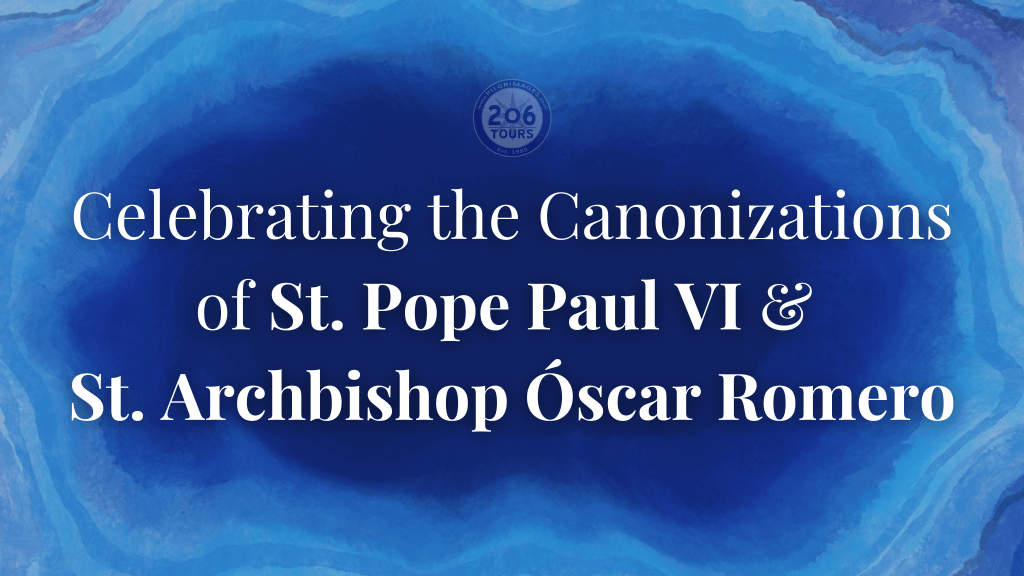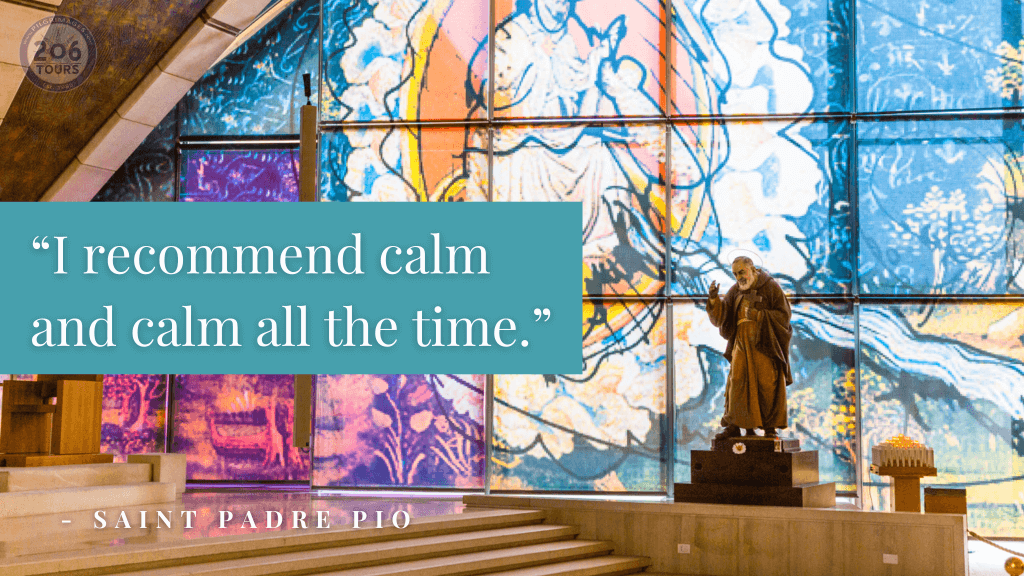Month: May 2018
In May of 2018, The Vatican’s Secretary of State announced that Blessed Pope Paul VI and Blessed Archbishop Óscar Romero would be Canonized in October. Here, we take a look at the lives of these two amazing figures in the Catholic Faith.
St. Pope Paul VI
St. Óscar Romero
[DISPLAY_ULTIMATE_SOCIAL_ICONS]
In honor of Saint Pio of Pietrelcina, also known as Padre Pio, we’d like to celebrate his inspiring and amazing life and legacy by sharing some of our favorite words of wisdom that he imparted to us during his life on earth.
Francesco Forgione was born on May 15, 1887, to Italian peasant farmers. Padre Pio was known to have expressed a strong desire to dedicate his life to God as early as five years old. In 1903, he became a Friar at the young age of 15 and was ordained as a Priest in 1910. After his death on September 23, 1968, Saint Pope John Paul II beatified Padre Pio in 1999 and subsequently canonized him in 2002.
Saint Padre Pio is perhaps most famously known for his stigmata, visions, and the gift of healing. He is recognized as the Patron Saint of Civil Defense Volunteers as he served in the military as a Friar in World War I. He spent much of his life ill and in pain, yet remained extremely faithful, hopeful, and even joyful. For this, he is venerated as a symbol of hope – inspiring and consoling those in times of struggle through unwavering faith.
Here are a few of our favorite quotes from Saint Padre Pio:
1. “Pray, hope, and don’t worry. Worry is useless. God is merciful and will hear your prayer.”
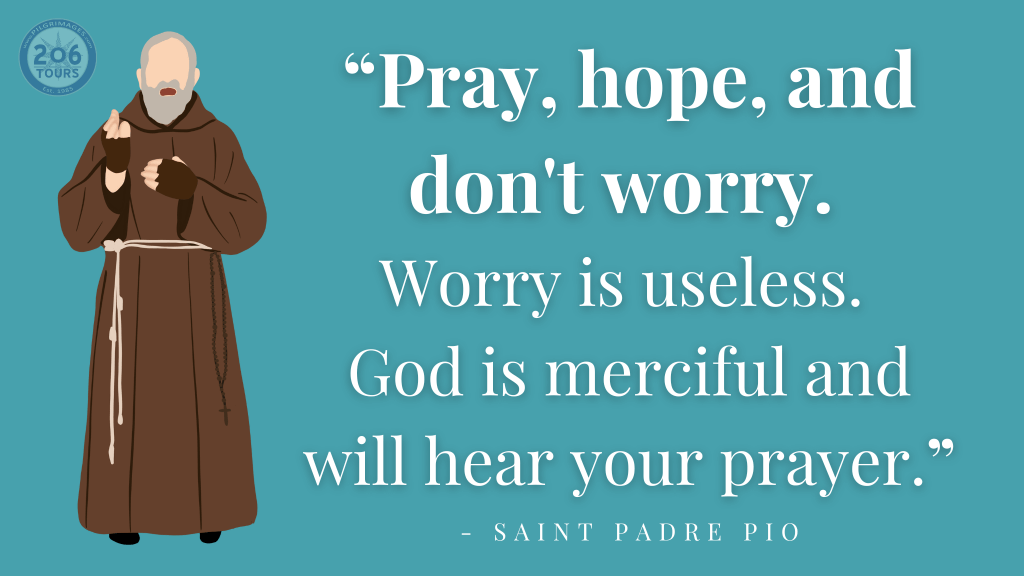
2. “Prayer is the best weapon we have; it is the key to God’s heart. You must speak to Jesus not only with your lips but with your heart. In fact, on certain occasions, you should only speak to Him with your heart.”
3. “The longer the trial to which God subjects you, the greater the goodness in comforting you during the time of the trial and in the exaltation after the combat.”
4. “Joy, with peace, is the sister of charity. Serve the Lord with laughter.”
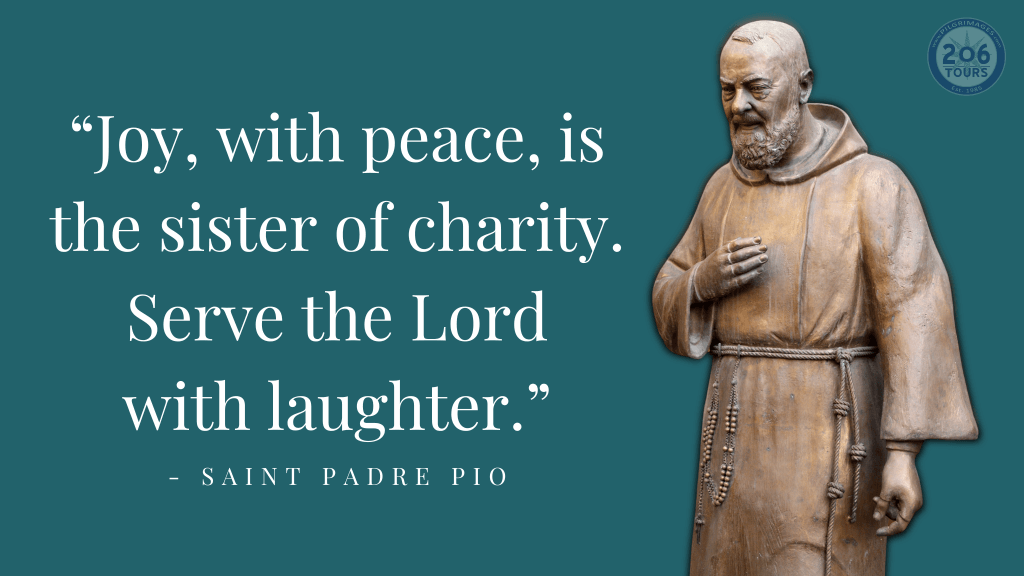
5. “Jesus is with you even when you don’t feel His presence. He is never so close to you as He is during your spiritual battles. He is always there, close to you, encouraging you to fight your battle courageously. He is there to ward off the enemy’s blows so that you may not be hurt.”
6. “The most beautiful act of faith is the one made in darkness, in sacrifice, and with extreme effort.”

7. “The storms that are raging around you will turn out to be for God’s glory, your own merit, and the good of many souls.”
8. “You must have boundless faith in the divine goodness, for the victory is absolutely certain.”
9. “My past, O Lord, to Your mercy; my present, to Your love; my future to Your providence.”

10. “You complain because the same trials are constantly returning. But look here, what have you to fear? Are you afraid of the divine craftsman who wants to perfect His masterpiece in this way? Would you like to come from the hands of such a magnificent Artist as a mere sketch and no more?”
11. “I recommend calm and calm all the time.”
12. “How unbearable is pain when suffered far from the Cross, but how sweet and bearable it becomes when it is offered close to the Cross of Jesus!”
13. “If we earnestly endeavor to love Jesus, this alone will drive all fear from our hearts and soul will find that instead of walking in the Lord’s paths, it is flying.”
14. “The greater your sufferings, the greater God’s love for you.”
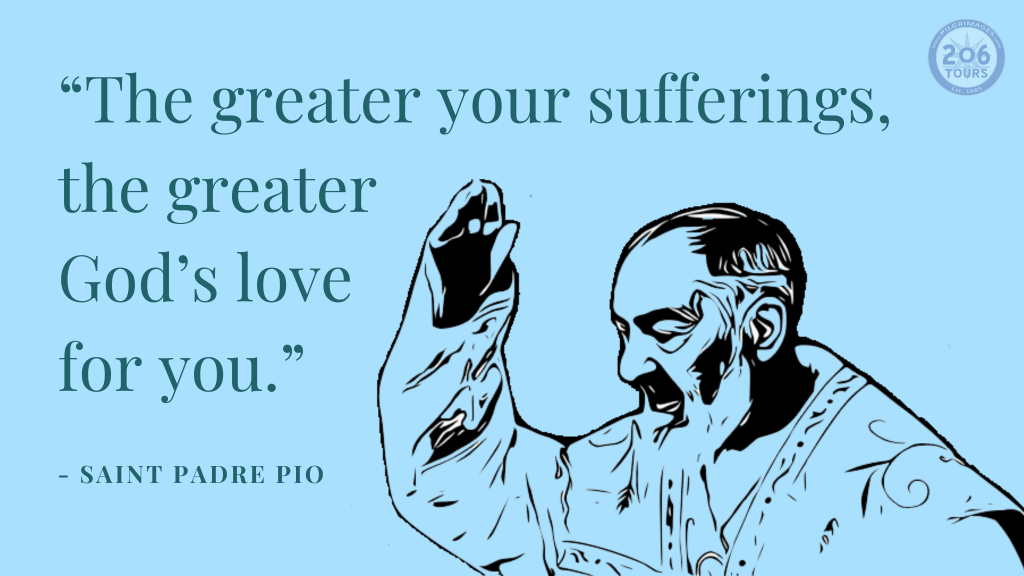
This year we will be celebrating the 50th Anniversary of Saint Padre Pio entering into eternal life – and – the 100th Anniversary of his Stigmata. Join us on a pilgrimage to Italy to celebrate the life and legacy of Saint Padre Pio!
Visit San Giovanni Rotundo & St. Padre Pio of Pietrelcina
Each year on May 13th, Catholics celebrate the Blessed Virgin Mary by honoring her message of peace and by reflecting on her apparitions in Fátima, Portugal.
The history of Our Lady of Fátima is a miraculous one. On May 13, 1917, the Virgin Mary first appeared to three shepherd children, Sister Lucia, St. Jacinta Marto, and St. Francisco in Fátima. Our Lady appeared to the children a total of six (6) times; the last Marian Apparition took place on October 13, 1917. In the midst of World War I, Mary famously counseled the children to pray the rosary and to pray for world peace.
On May 13, 2017, in celebration and honor of these historic apparitions, Pope Francis Canonized witnesses St. Jacinto Marto and St. Francisco on the 100th Anniversary of the first apparition. He also visited Fátima with about a million Catholic Pilgrims to celebrate the newly Canonized Saints and Our Lady of Fátima.
Fátima has become one of the most popular pilgrimage sites in the world, attracting over 4 million pilgrims on any given year. A Pilgrimage to Fátima is a very spiritual experience as one visits the apparition sites and walks in the footsteps of the shepherd children.
Our Lady of Fátima Pilgrim Sites:
- The Basilica of Our Lady of the Rosary is a spectacular neoclassical Church containing the tombs of St. Francisco, St. Jacinta, and Sister Lucia. Here you can view the monument that commemorates the Sacred Heart of Jesus. In homage to Our Lady’s consistency in Her messages to pray the Rosary, the Basilica features fifteen altars that are dedicated to the fifteen mysteries of the Rosary.
- The Little Chapel of the Apparitions is a simple, yet modern chapel is located where the Virgin Mary first appeared to the children.
- The Shrine of Fátima Museum houses the exhibit, Fátima: Light and Peace which contains a collection of offerings dedicated to Our Lady of Fátima and commemorates the apparitions and all the pilgrims who worship there.
- The Holy Trinity Basilica is a Minor Basilica in the Marian Shrine of Our Lady of Fátima built in the modernist style and completed in 2007.
- The Via Sacra or “Sacred Way” marks the path taken by the children to the first apparition. Pilgrims can walk along this path and pray the Stations of the Cross at fifteen small Chapels before arriving in Valinhos, the site of Our Lady’s August 1917 apparition and the first and third apparitions of the Angel.
- Candlelight Vigils are celebrated by pilgrims in response to the request of Our Lady.
Did You Know These Interesting Facts About Fatima?
- Some pilgrims crawl to the shrine on their knees as an act of penance, 600 feet (182 meters) from the Basilica of the Most Holy Trinity to the Chapel of Apparitions, and then they circle around the Chapel on their knees too, praying the rosary – what a beautiful witness.
- Many pilgrims make pilgrimage walking from all over Portugal, as far away as Lisbon – 80 miles away
- The Fátima Prayer: O my Jesus, forgive us our sins, and save us from the fires of hell, especially those with most need of thy mercy.
- During the Christian conquest in the 12th century, a group of Moors was captured by a Christian army. Among them was a Moorish girl called Fátima. One of the Christians fell in love with Fátima and married her. When Fátima died, he built a small chapel (where the Fátima parish stands) in her honor; the lands received her name.
- The crown on the statue is an offering by Portuguese women in thanksgiving for Portugal having not entered World War II and consequently saving their men from having to fight in the war. The crown is believed to have 3,000 precious stones. It is also embedded with one of the bullets fired at St. Pope John Paul II, during an assassination attempt in Rome in 1981, in thanksgiving to Our Lady for saving his life.
As we remember and honor Our Lady of Fátima, her message to pray for peace is just as significant now as it was in 1917. May we all reflect on Our Lady’s messages and honor her through our lives.
Interested in a Spiritual Pilgrimage to Fátima?

